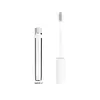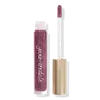What's inside
What's inside
 Key Ingredients
Key Ingredients

 Benefits
Benefits

 Concerns
Concerns

 Ingredients Side-by-side
Ingredients Side-by-side

Polybutene
Ethylhexyl Palmitate
EmollientCaprylic/Capric Triglyceride
MaskingHelianthus Annuus Seed Oil
EmollientBis-Diglyceryl Polyacyladipate-2
EmollientSilica Dimethyl Silylate
EmollientParfum
MaskingPhenoxyethanol
PreservativeTocopheryl Acetate
AntioxidantSimmondsia Chinensis Seed Oil
EmollientPentaerythrityl Tetra-Di-T-Butyl Hydroxyhydrocinnamate
AntioxidantCocoyl Hydrolyzed Collagen
CleansingEthylhexylglycerin
Skin ConditioningTribehenin
EmollientButylene/Ethylene/Styrene Copolymer
Ethylene/Propylene/Styrene Copolymer
Sorbitan Isostearate
EmulsifyingBHT
AntioxidantHydrolyzed Hyaluronic Acid
HumectantPalmitoyl Tripeptide-1
Skin ConditioningPolybutene, Ethylhexyl Palmitate, Caprylic/Capric Triglyceride, Helianthus Annuus Seed Oil, Bis-Diglyceryl Polyacyladipate-2, Silica Dimethyl Silylate, Parfum, Phenoxyethanol, Tocopheryl Acetate, Simmondsia Chinensis Seed Oil, Pentaerythrityl Tetra-Di-T-Butyl Hydroxyhydrocinnamate, Cocoyl Hydrolyzed Collagen, Ethylhexylglycerin, Tribehenin, Butylene/Ethylene/Styrene Copolymer, Ethylene/Propylene/Styrene Copolymer, Sorbitan Isostearate, BHT, Hydrolyzed Hyaluronic Acid, Palmitoyl Tripeptide-1
Hydrogenated Poly(C6-14 Olefin)
EmollientEthylhexyl Hydroxystearate
EmollientSimmondsia Chinensis Seed Oil
EmollientRicinus Communis Seed Oil
MaskingEthylene/Propylene/Styrene Copolymer
Silica
AbrasiveCopernicia Cerifera Wax
Stearyl Behenate
EmollientPolyhydroxystearic Acid
EmulsifyingCaprylic/Capric Triglyceride
MaskingEthylhexyl Palmitate
EmollientHydroxystearic Acid
CleansingButylene/Ethylene/Styrene Copolymer
Tribehenin
EmollientMangifera Indica Seed Butter
Skin ConditioningHydrolyzed Hyaluronic Acid
HumectantButyrospermum Parkii Butter
Skin ConditioningIsostearic Acid
CleansingVanilla Planifolia Fruit Extract
Skin ConditioningSorbitan Isostearate
EmulsifyingHydrogenated Vegetable Oil
EmollientPersea Gratissima Oil
Skin ConditioningLecithin
EmollientPolyglyceryl-3 Polyricinoleate
EmulsifyingPentaerythrityl Tetra-Di-T-Butyl Hydroxyhydrocinnamate
AntioxidantLactic Acid
BufferingPalmitoyl Tripeptide-1
Skin ConditioningStearoyl Glutamic Acid
CleansingMica
Cosmetic ColorantTitanium Dioxide
Cosmetic ColorantCI 77891
Cosmetic ColorantIron Oxides
CI 77491
Cosmetic ColorantCI 15850
Cosmetic ColorantCI 77492
Cosmetic ColorantHydrogenated Poly(C6-14 Olefin), Ethylhexyl Hydroxystearate, Simmondsia Chinensis Seed Oil, Ricinus Communis Seed Oil, Ethylene/Propylene/Styrene Copolymer, Silica, Copernicia Cerifera Wax, Stearyl Behenate, Polyhydroxystearic Acid, Caprylic/Capric Triglyceride, Ethylhexyl Palmitate, Hydroxystearic Acid, Butylene/Ethylene/Styrene Copolymer, Tribehenin, Mangifera Indica Seed Butter, Hydrolyzed Hyaluronic Acid, Butyrospermum Parkii Butter, Isostearic Acid, Vanilla Planifolia Fruit Extract, Sorbitan Isostearate, Hydrogenated Vegetable Oil, Persea Gratissima Oil, Lecithin, Polyglyceryl-3 Polyricinoleate, Pentaerythrityl Tetra-Di-T-Butyl Hydroxyhydrocinnamate, Lactic Acid, Palmitoyl Tripeptide-1, Stearoyl Glutamic Acid, Mica, Titanium Dioxide, CI 77891, Iron Oxides, CI 77491, CI 15850, CI 77492
 Reviews
Reviews

Ingredients Explained
These ingredients are found in both products.
Ingredients higher up in an ingredient list are typically present in a larger amount.
We don't have a description for Butylene/Ethylene/Styrene Copolymer yet.
This ingredient is an emollient, solvent, and texture enhancer. It is considered a skin-softener by helping the skin prevent moisture loss.
It helps thicken a product's formula and makes it easier to spread by dissolving clumping compounds.
Caprylic Triglyceride is made by combining glycerin with coconut oil, forming a clear liquid.
While there is an assumption Caprylic Triglyceride can clog pores due to it being derived from coconut oil, there is no research supporting this.
Learn more about Caprylic/Capric TriglycerideWe don't have a description for Ethylene/Propylene/Styrene Copolymer yet.
Ethylhexyl Palmitate, also known as octyl palmitate, is created from 2-ethylhexyl alcohol and palmitic acid. It is a fatty acid ester.
The fatty acid content of Ethylhexyl Palmitate makes it an emollient. Emollients help soften and hydrate your skin by trapping moisture within.
Ethylhexyl Palmitate is also used to help improve the texture of cosmetics. It helps other ingredient dissolve in products and help disperse ingredients more evenly.
You'll likely find this ingredient in sunscreen, as it is often used to mix UV-blocking ingredients such as avobenzone and ethylhexyl triazone.
It can also help stabilize the fragrances in a product as a fragrance fixative.
Ethylhexyl Palmitate can be used to substitute mineral oil.
Due to its high fatty acid content, it may not be fungal-acne safe.
Learn more about Ethylhexyl PalmitateHydrolyzed Hyaluronic Acid is a form of hyaluronic acid. It is created by the hydrolysis of hyaluronic acid with a high molecular weight. Once created, Hydrolyzed Hyaluronic Acid has a low molecular weight.
Low molecular weight HA has been shown to hydrate and increase elasticity of the skin. Increasing elasticity is also associated with reduction of wrinkle depth.
One study found topical low molecular weight hyaluronic acid may be considered for the treatment of rosacea in the adult population. However, we always recommend speaking with a professional about your skin concerns.
Hyaluronic acids are a humectant. This means they draw moisture from the air. Hyaluronic acids help moisturize, soothe, and protect the skin.
Read more about other common forms of hyaluronic acid:
Learn more about Hydrolyzed Hyaluronic AcidPalmitoyl Tripeptide-1 is also known as pal-GHK. It is made up of 3 amino acids and palmitic acid, a fatty acid that helps it absorb into skin more easily.
This peptide is as a signal peptide, meaning it tells the skin to produce more collagen. Collagen is the key protein that helps form the skin's structure and keep it plump, firm, and hydrated.
By boosting collagen production, this ingredient supports a stronger skin barrier and helps reduce the appearance of wrinkles.
You'll most likely see this ingredient paired with Palmitoyl Tetrapeptide-7 in the well-known Matrixyl 3000 complex. While results from in-house testing should be viewed cautiously, this peptide duo is among the most studied and widely used in modern skincare.
Due to its palmitic acid base, this ingredient may not be safe for Malassezia folliculitis.
Read more about other common types of peptides here:
Learn more about Palmitoyl Tripeptide-1Pentaerythrityl Tetra-Di-T-Butyl Hydroxyhydrocinnamate (long name, huh?) is a synthetic antioxidant.
It is used to help stabilize other antioxidants or prevent the color from changing in a product.
As an antioxidant, it helps fight free-radical molecules. Free-radical molecules are capable of damaging our cells and other genetic material. Thus, antioxidants may reduce the signs of aging.
This ingredient is oil-soluble.
Learn more about Pentaerythrityl Tetra-Di-T-Butyl HydroxyhydrocinnamateThis oil comes from the seeds of the desert shrub called Jojoba. It is more commonly known as jojoba oil, a non-comedogenic oil.
Jojoba oil does not contain fragrance and has many fatty-acids, making it a great soothing ingredient.
It also contains Vitamin E, a great moisturizing ingredient. Vitamin E is also an antioxidant and protects your skin against oxidative damage.
This ingredient humectant properties, meaning it helps draw moisture from the air. This helps keep your skin hydrated.
While jojoba has antibacterial properties, it is only able to kill some strains of bacteria.
Studies also show it helps in wound healing. In fact, Indigenous cultures have used jojoba as a moisturizer and to help treat burns for centuries.
Fun fact: Jojoba oil similar to natural human skin sebum, so it has a great effect on dry skin. It is also promising with helping to regulate sebum production.
Due to its fatty acid content, Jojoba oil may not be fungal acne safe. We recommend speaking with a professional if you have any concerns.
Learn more about Simmondsia Chinensis Seed OilSorbitan Isostearate is an emulsifer and cleaning agent. It is created from isostearic acid and sorbitol.
As an emulsifier, Sorbitan Isostearate prevents oils and water from separating.
Due to its isostearic acid base, it may not be safe for Malassezia or fungal acne.
Learn more about Sorbitan IsostearateTribehenin comes from glycerin and behenic acid.
It is used as an emollient, or moisturizer. Emollients form a thin barrier on skin to prevent moisture from escaping.
This ingredient may not be Malassezia folliculitis, or fungal-acne safe.
Learn more about Tribehenin